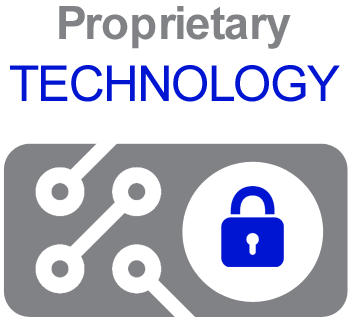| Lesson 6 | Standards |
| Objective | Describe the problem of standardizing eBusiness practices. |
Standardizing ebusiness Practices
Standards are definitions or formats that have been either approved by a recognized organization or are accepted as de facto by the industry.
There are several standard-setting organizations that specialize in different areas of computer technology. Those organizations are described
in this table.
| Organization | Acronym | Specific function |
| American National Standards Institute | ANSI | ANSI is primarily concerned with software. It has defined standards for a number of programming languages, including C, COBOL, and FORTRAN. |
| International Telecommunication Union | ITU | ITU defines international standards, particularly communications protocols. It has defined a number of standards, including V.22, V.32, V.34, and V.42, that specify protocols for transmitting data over telephone lines. |
| Institute of Electrical and Electronic Engineers | IEEE | While ANSI sets standards for software, IEEE sets standards for hardware. In particular, it deals with most types of electrical interfaces. Its most famous standard is probably RS232C, which defines an interface for serial communication. This is the interface used by most modems, and a number of other devices, including display screens and mice. IEEE is also responsible for designing floating pointc and date formats. |
| International Standards Organization | ISO | ISO is aA worldwide federation of national standards bodies from some 100 countries, one from each country. Among the standards it fosters is Open Systems Interconnection, a universal reference model for communication protocols. |
| Video Electronics Standards Association | VESA | VESA is a worldwide forum for setting industry-wide interface standards for PC, workstation, and computing environments. |
In addition to those standards that are approved by organizations, there are also de facto standards.
These are formats that have become standard simply because a large number of companies have agreed to use them. They have not been formally approved as standards, but they are standards nonetheless.
Why are standards important?
Standards exist for programming languages, operating systems, data formats, communications protocols, and electrical interfaces.
For the user, standards are important because they allow the combination of products from different manufacturers to create a customized system. Without standards, only hardware and software from the same company could be used together.
Standards and eBusiness Technologies
In order to choose your solutions technologies wisely, it's important to know that eBusiness technologies fall into two "standards camps." These camps are:
- Proprietary technologies
- Standards-based technologies

- You risk being locked into a design that is quickly outdated
- Not being able to find resources who can customize your solution
If you use standards-based technologies you benefit from
- A longer shelf life
- A wide variety of consulting and training resources
- A rich set of third-party, supply-side products
You risk being locked into a design that is quickly outdated Not being able to find resources who can customize your solution
e-business Standards and Risks
E-business advocates often make e-business models sound like an easy solution to business and financial challenges. E-business can offer specific advantages, such as reaching out to a wider customer base and faster transactions. Customers frequently consult the Internet to find stores and service providers or to make purchases. Before jumping into the world of e-commerce, business owners also need to know the risks.
Hidden Costs
Data Security
Every business faces the problem of data security, and e-business maximizes these challenges.
Customers enter a considerable amount of sensitive information, ranging from phone numbers to credit card numbers, on your site.
As the site owner, you take responsibility for protecting that information with appropriate security measures, such as Secure Sockets Layer encryption or
contracting with third parties to provide secure transaction processing.
Failures in data security can lead both to fines and loss of faith on the part of your customers.
Data-Driven Marketing
Marketing Failures
Online and offline businesses both rely on effective marketing to drive growth and sales. Unfortunately, the techniques and strategies for online marketing diverge radically from offline techniques.
Business owners can find themselves lost in talk of pay-per-click, viral techniques and social media.
Businesses new to e-business may find it necessary to hire an individual or company that specialize in online marketing, in addition to any offline marketing services they already use.
Without effective online marketing to drive traffic to the website, the entire project can turn into a waste of time and financial resources.
If you use proprietary technologies, you face the following risks:
- You risk being locked into a design that is quickly outdated
- Not being able to find resources who can customize your solution
- A longer shelf life
- A wide variety of consuting and training resources
- A rich set of third-party, supply-side products
Standards - Exercise
Click the Exercise link below to assess what standards your e-solutions technology should adhere to.
Standards ebusiness - Exercise
The next lesson describes the tools necessary for developing an eBusiness solution.
Standards ebusiness - Exercise
The next lesson describes the tools necessary for developing an eBusiness solution.